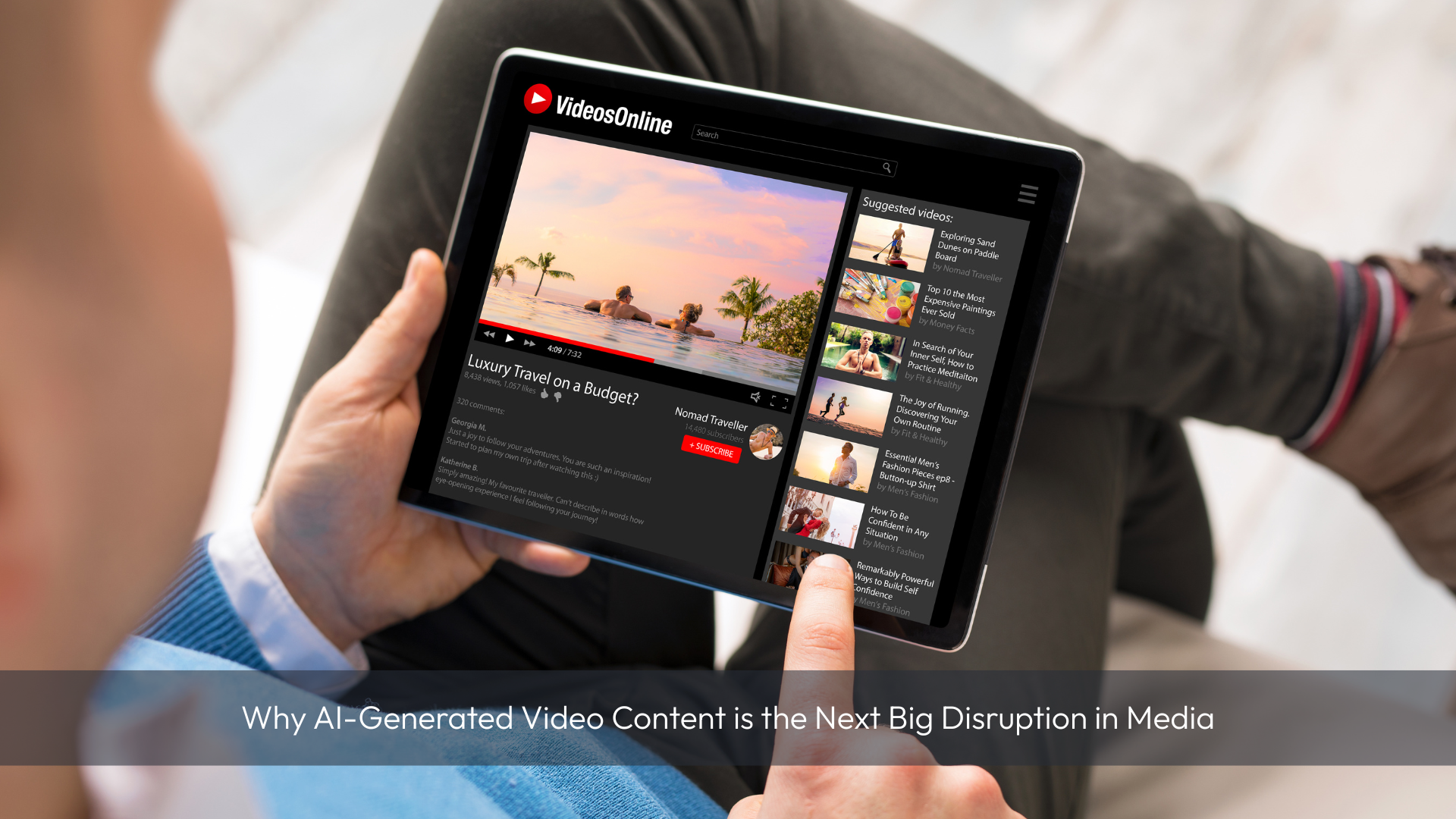AI is rapidly transforming the media landscape, and video content is at the forefront of this revolution. From automated video editing to fully AI-generated films, artificial intelligence is changing how content is created, distributed, and consumed. As AI tools become more sophisticated, they are set to disrupt traditional media industries, offering faster production times, cost savings, and unprecedented creative possibilities.
The Rise of AI-Generated Video
AI-powered video tools are making it easier than ever to create high-quality content with minimal human intervention. Some of the most significant advancements include:
- AI-Driven Scriptwriting – AI can generate entire scripts based on keywords, audience preferences, and trending topics.
- Deepfake Technology – AI can manipulate video footage to create realistic face swaps, voice cloning, and even entirely synthetic actors.
- Automated Video Editing – AI tools can analyze footage, select the best clips, add transitions, and adjust pacing based on engagement metrics.
- AI-Powered Animation – Platforms can generate realistic or stylized animations without requiring manual drawing or frame-by-frame adjustments.
How AI is Changing Media Production
1. Faster and More Cost-Effective Content Creation
Traditional video production requires a team of writers, editors, animators, and actors, making it time-consuming and expensive. AI streamlines the process by generating scripts, voiceovers, and visuals in minutes. This lowers production costs and makes high-quality video content accessible to small businesses and independent creators.
2. Personalized Video Content at Scale
AI can analyze user behavior and generate personalized video ads, tutorials, and news updates tailored to individual preferences. This is particularly valuable in digital marketing, where AI-generated videos can dynamically adjust based on viewer demographics and interests.
3. AI-Generated News and Journalism
News organizations are already experimenting with AI-generated video reports that pull data from live feeds, analyze trends, and produce short news clips without human intervention. This could reshape journalism by allowing real-time, automated reporting.
4. The Impact on Traditional Media Jobs
As AI takes over video production tasks, traditional roles like video editors, animators, and voice actors may face disruption. However, AI creates new opportunities for media professionals to focus on higher-level storytelling, strategy, and creative direction.
5. Ethical Concerns and the Risk of Misinformation
AI-generated content raises ethical questions, particularly with deepfake technology. Fake videos can be used for misinformation, fraud, and political manipulation. Media companies and regulators must establish guidelines to ensure responsible AI usage.
The Future of AI-Generated Video
The adoption of AI in video production is accelerating. Some key trends to watch include:
- AI-Generated Feature Films – Studios are exploring AI-driven storytelling and character creation.
- Interactive AI Video Content – AI-powered videos that change in real time based on viewer input.
- Virtual Influencers and AI-Generated Personalities – Digital avatars that create content and engage with audiences.
As AI continues to evolve, it will redefine how video content is created and consumed. The question is no longer whether AI will disrupt media but how quickly industries will adapt to this new reality.

